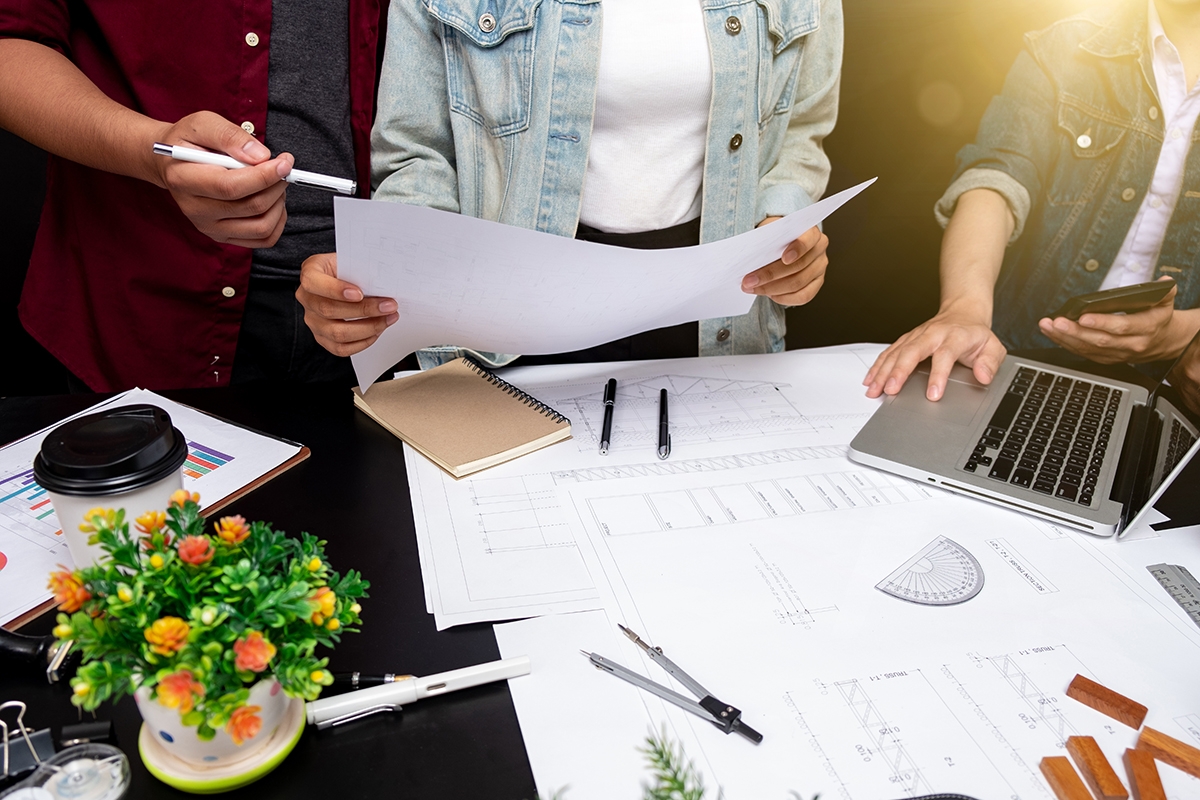A Lesson Plan is created by a school teacher or home teacher that outlines the objectives and activities for a week or a year of a preschool class.
Lesson plans ensure that the children can both play and meet learning benchmarks for kindergarten. They include additional details like materials, locations, and assessments involved on any given school day.
When you put your ideas on paper, this gives you a reference to facilitate lessons smoothly. Lesson plans also ensure that your planning is intentional and curated around the needs of your children. These needs include having fun, learning at the appropriate developmental levels, and meeting benchmarks for kindergarten.
Additionally, written plans document your professionalism to parents, supervisors, and accreditation entities. They showcase how objectives are met through your lessons. Lastly, lesson plans help you document multiple approaches to an activity to accommodate children of differing ability levels.
Free Templates
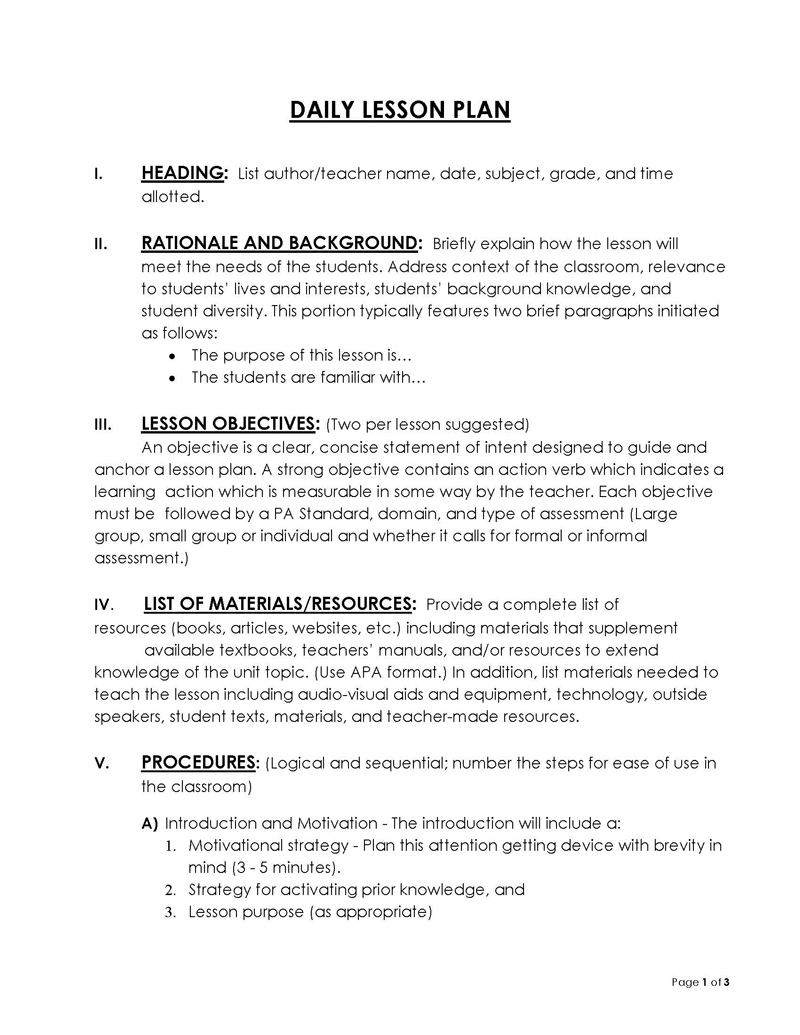
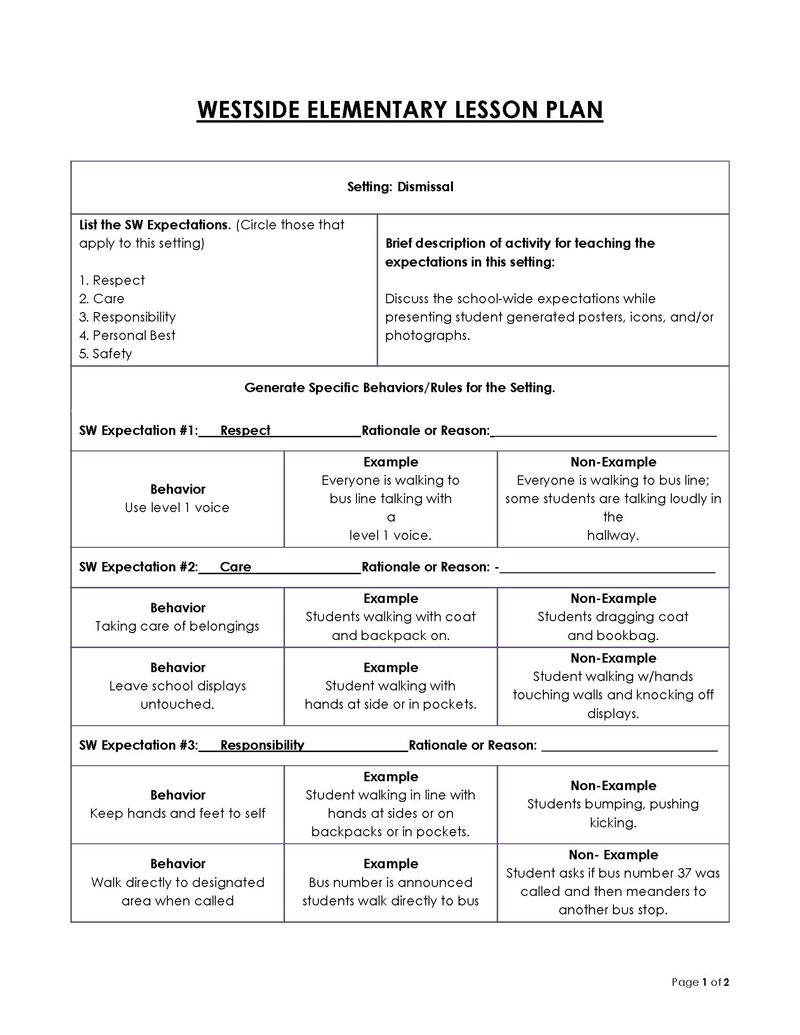
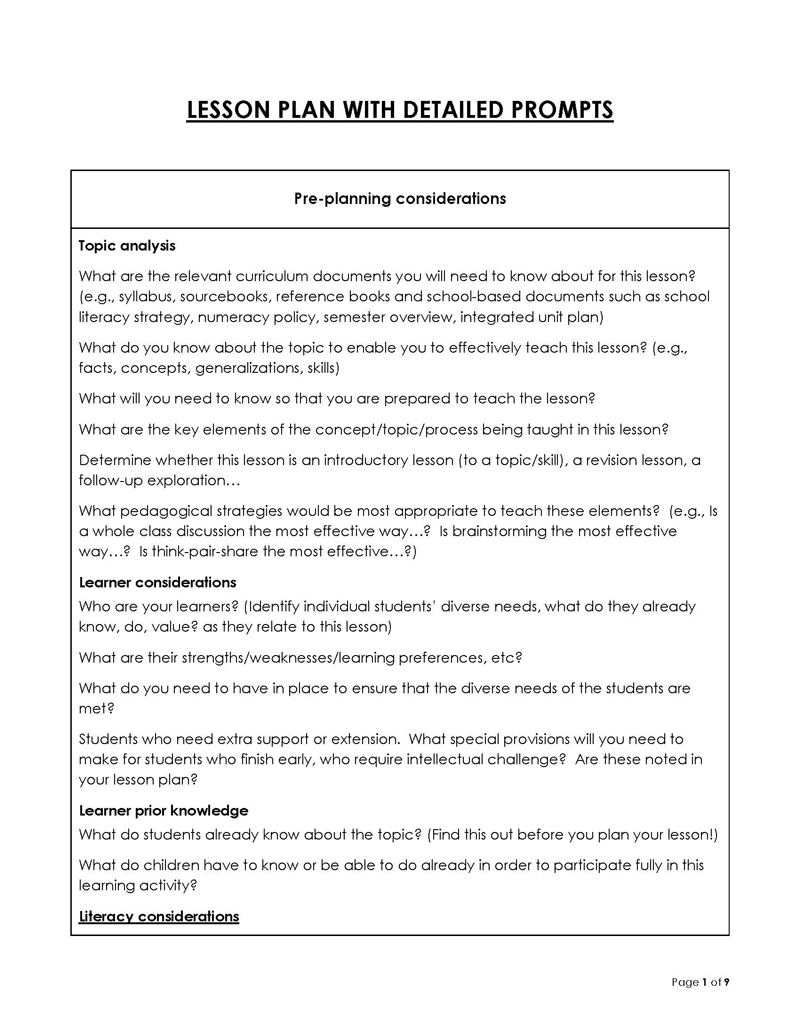
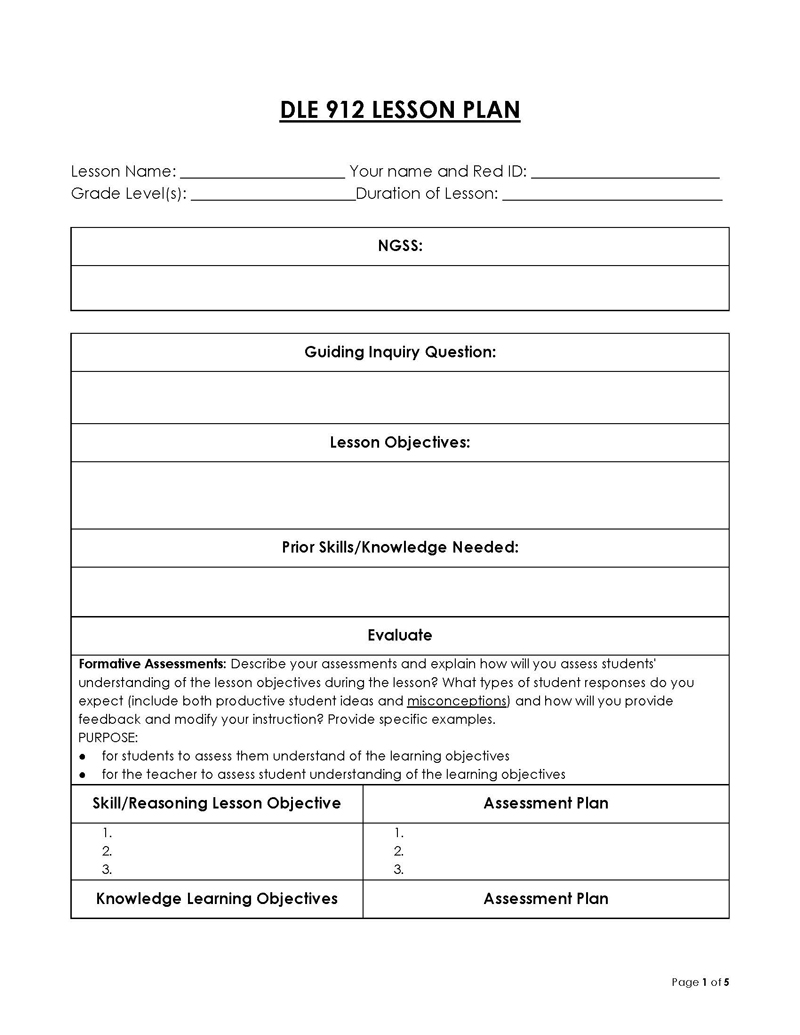
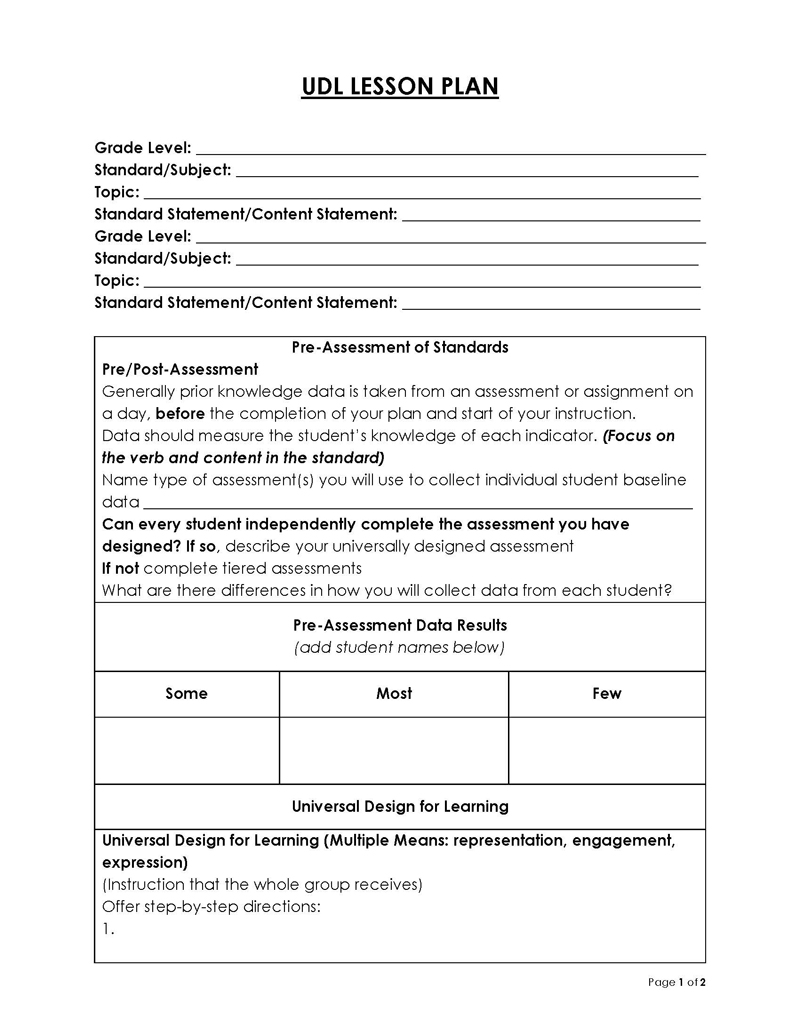
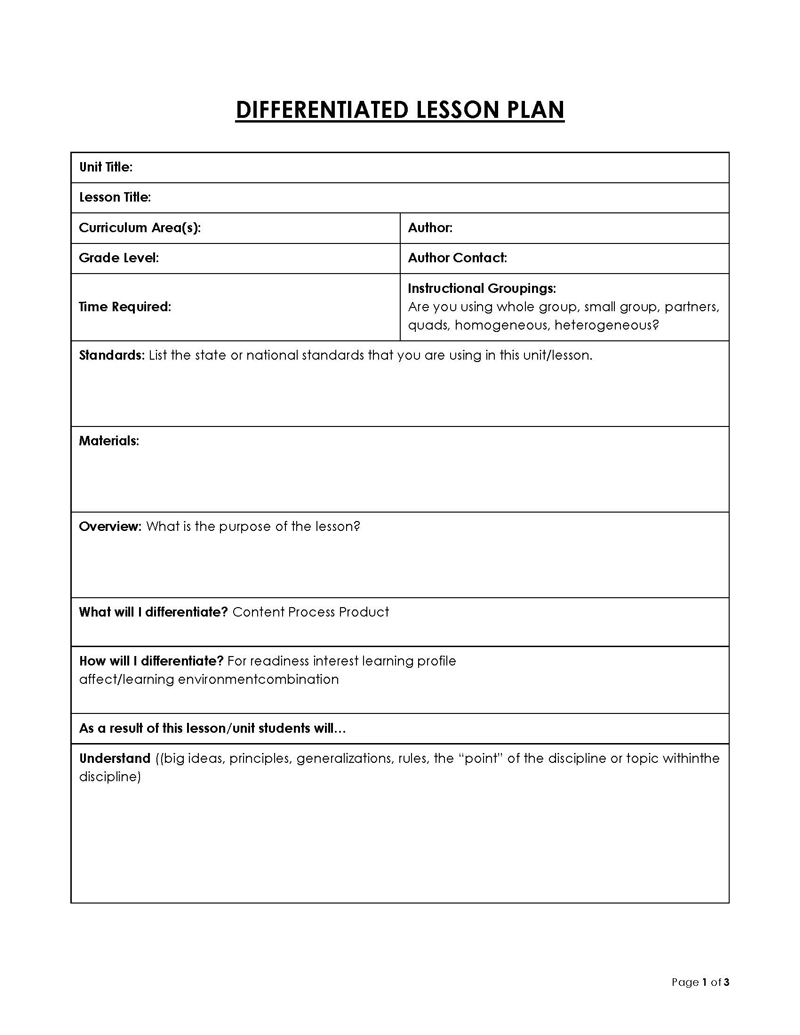
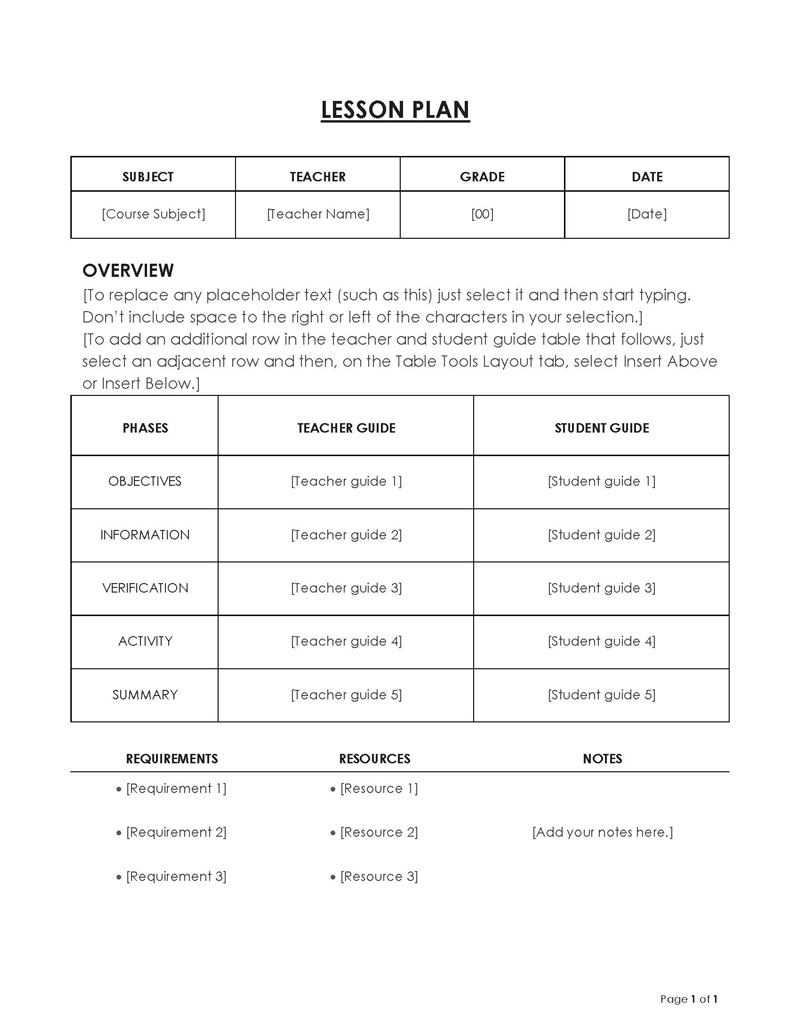
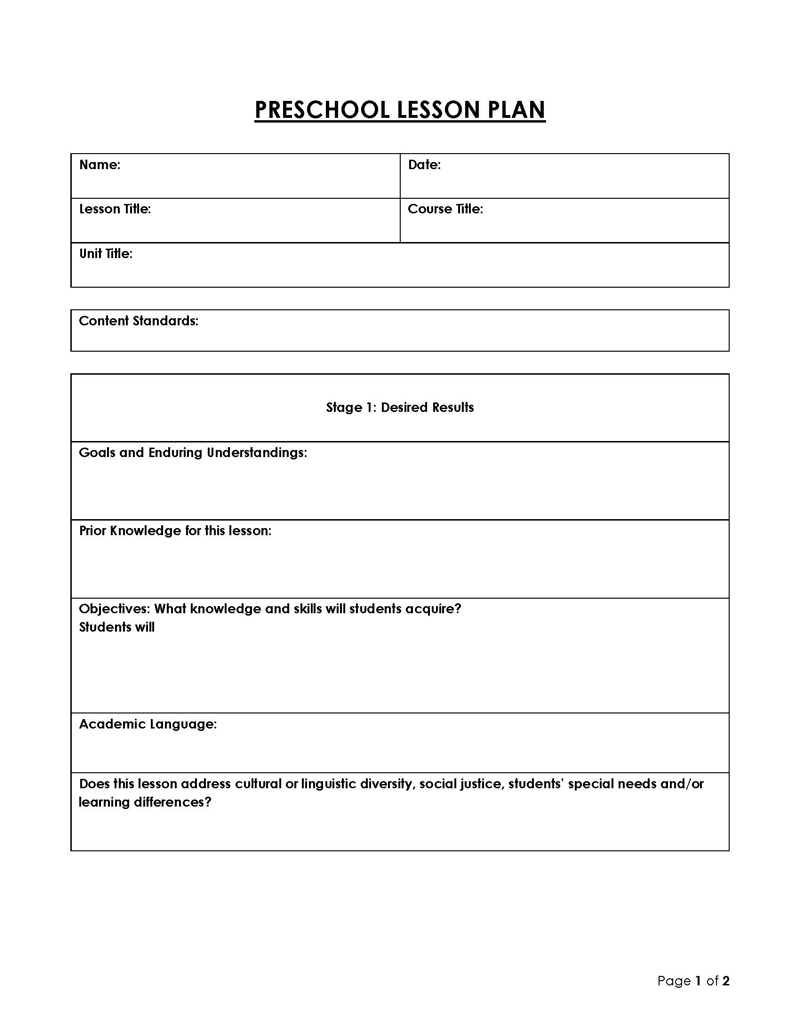
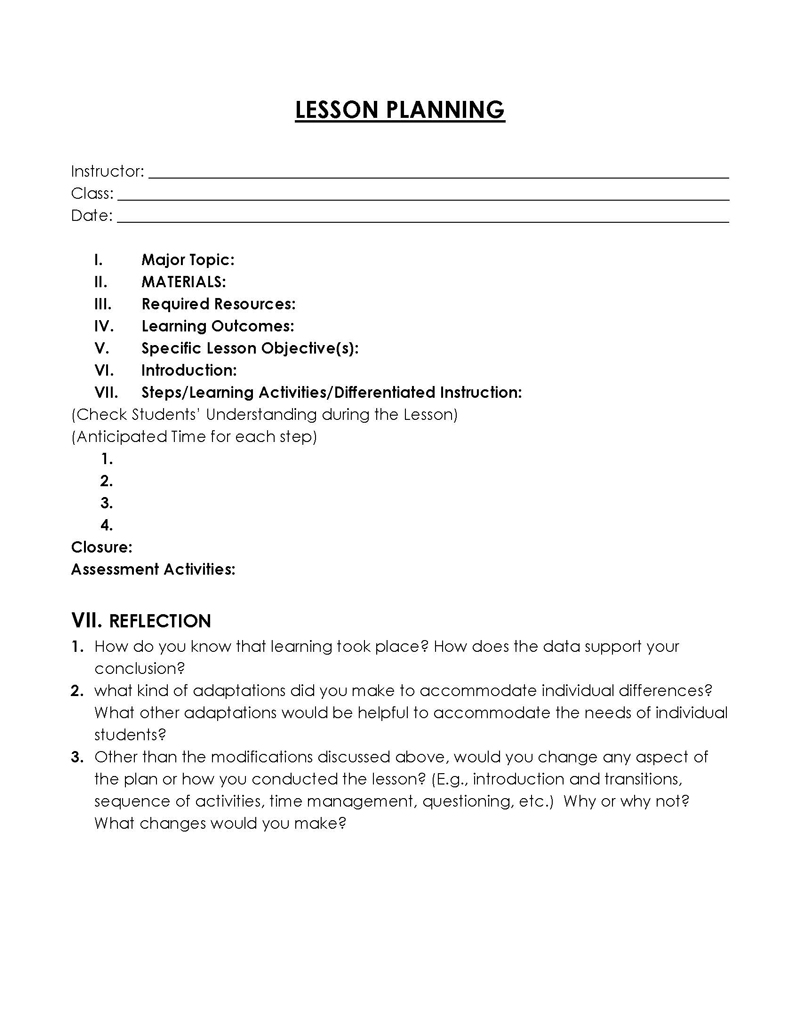
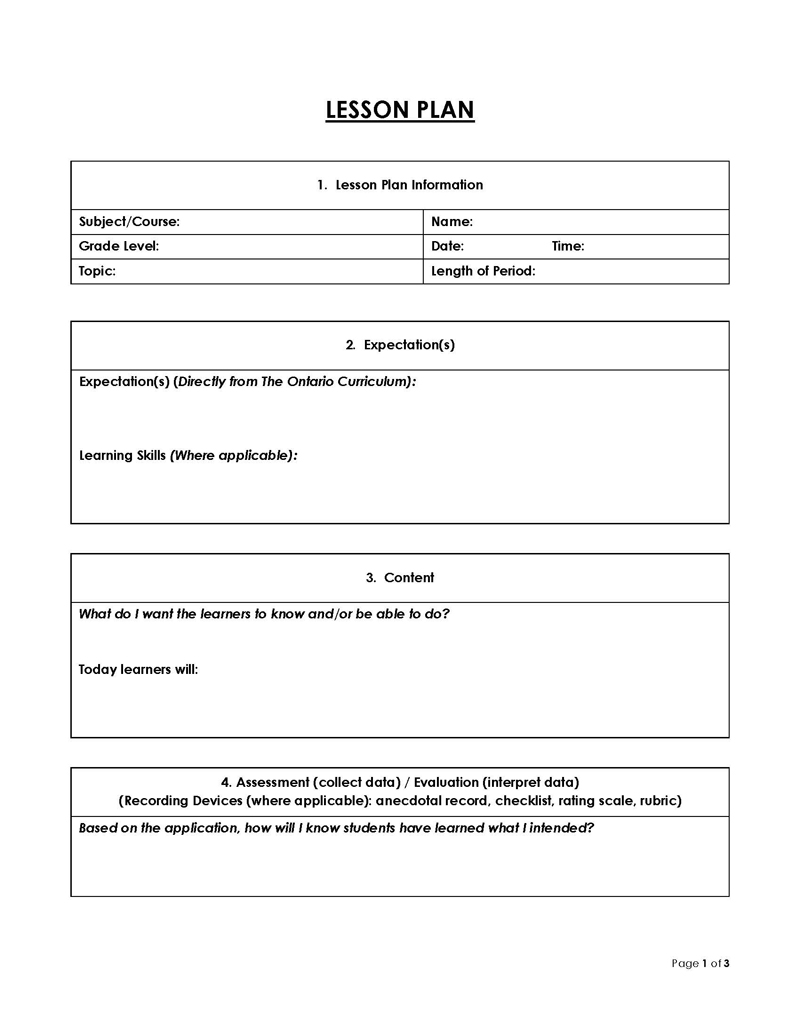
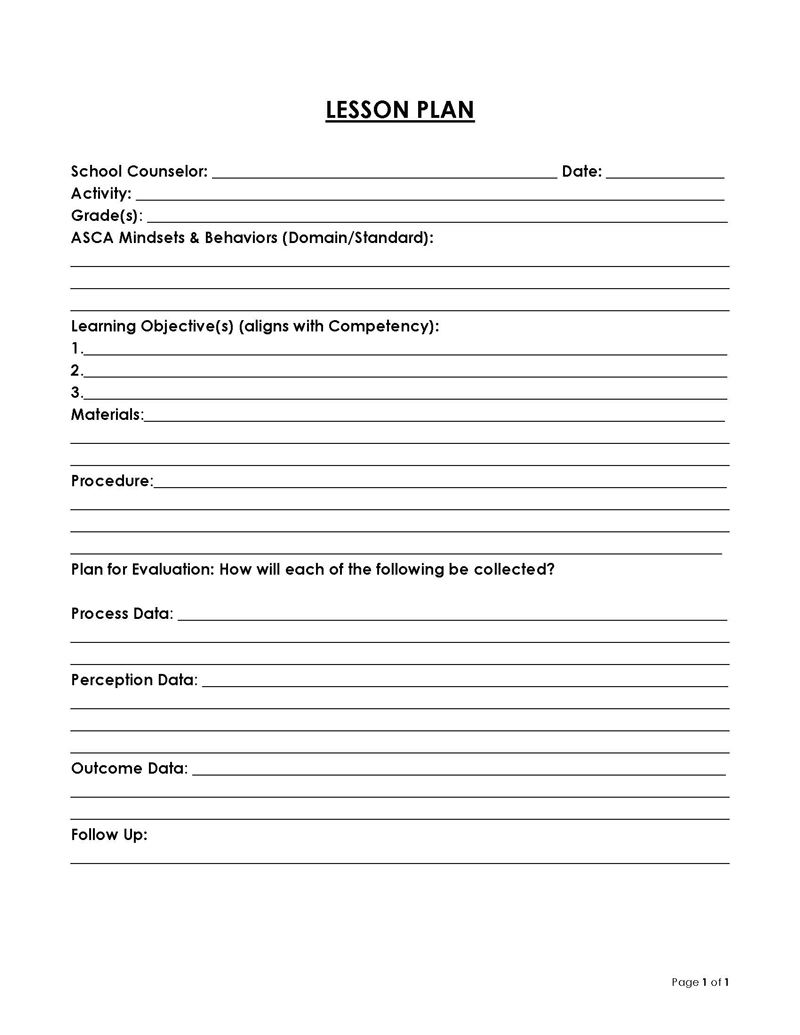
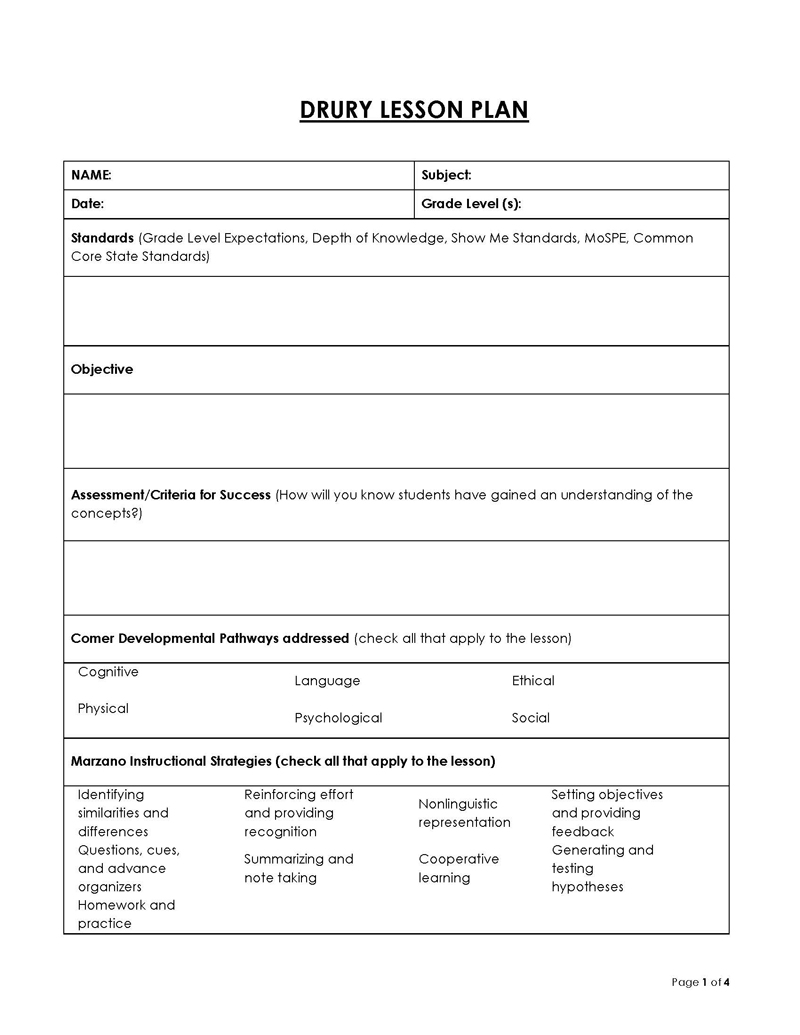
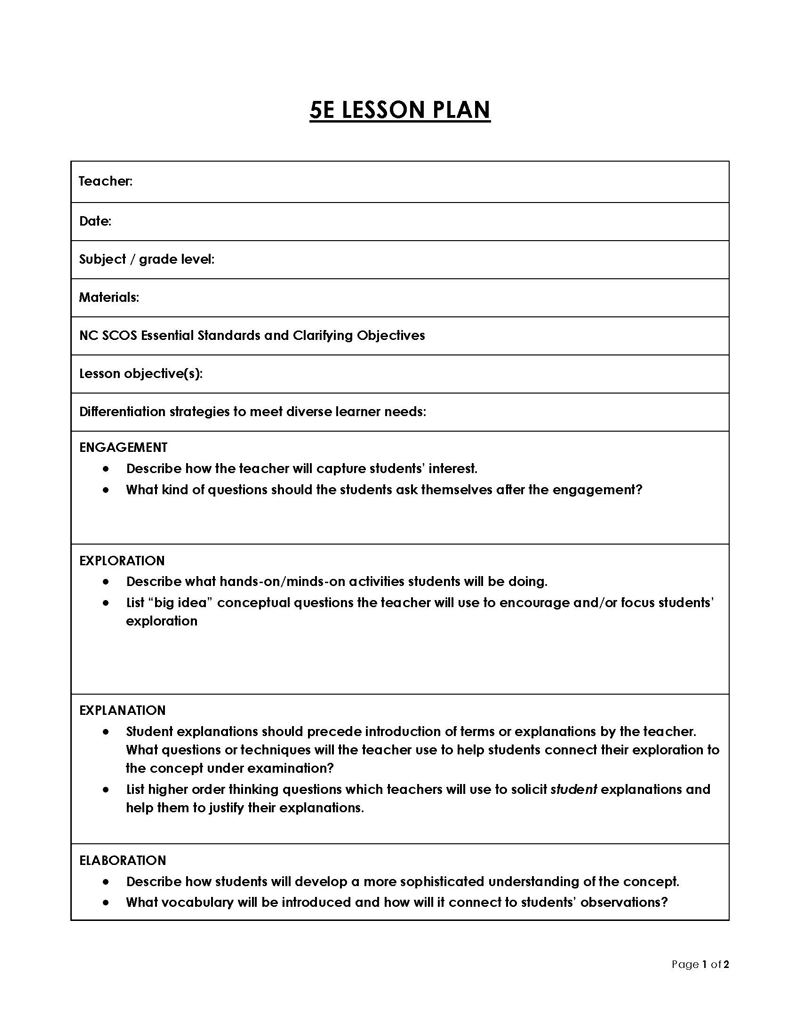
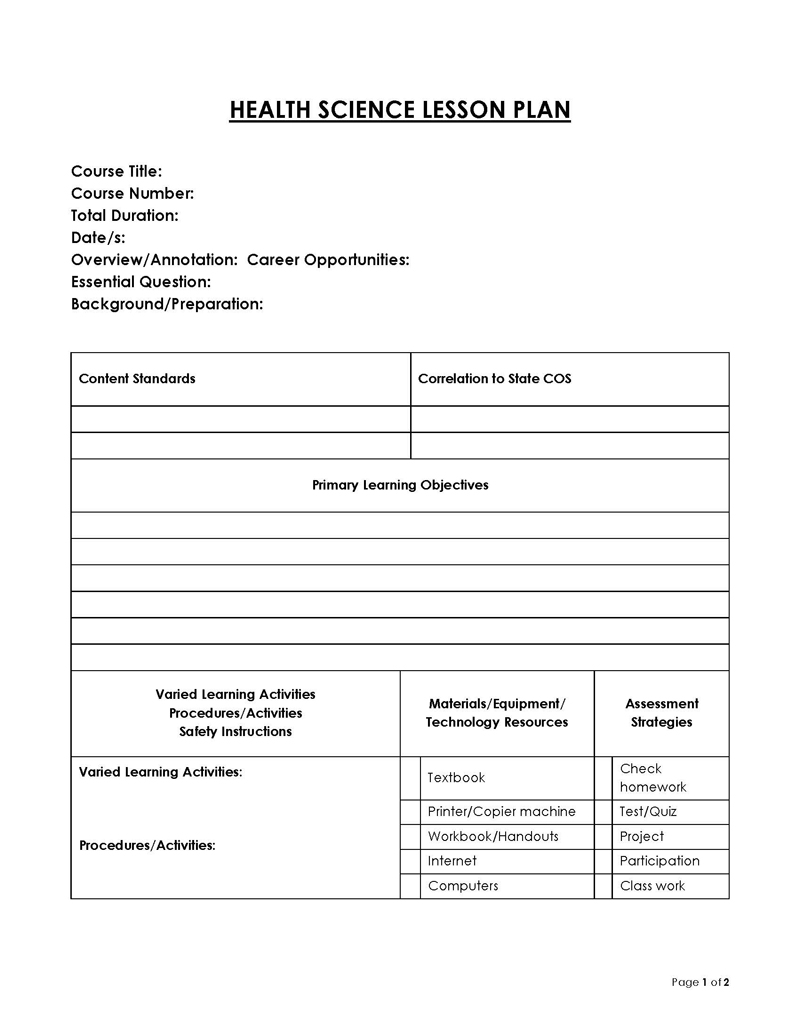
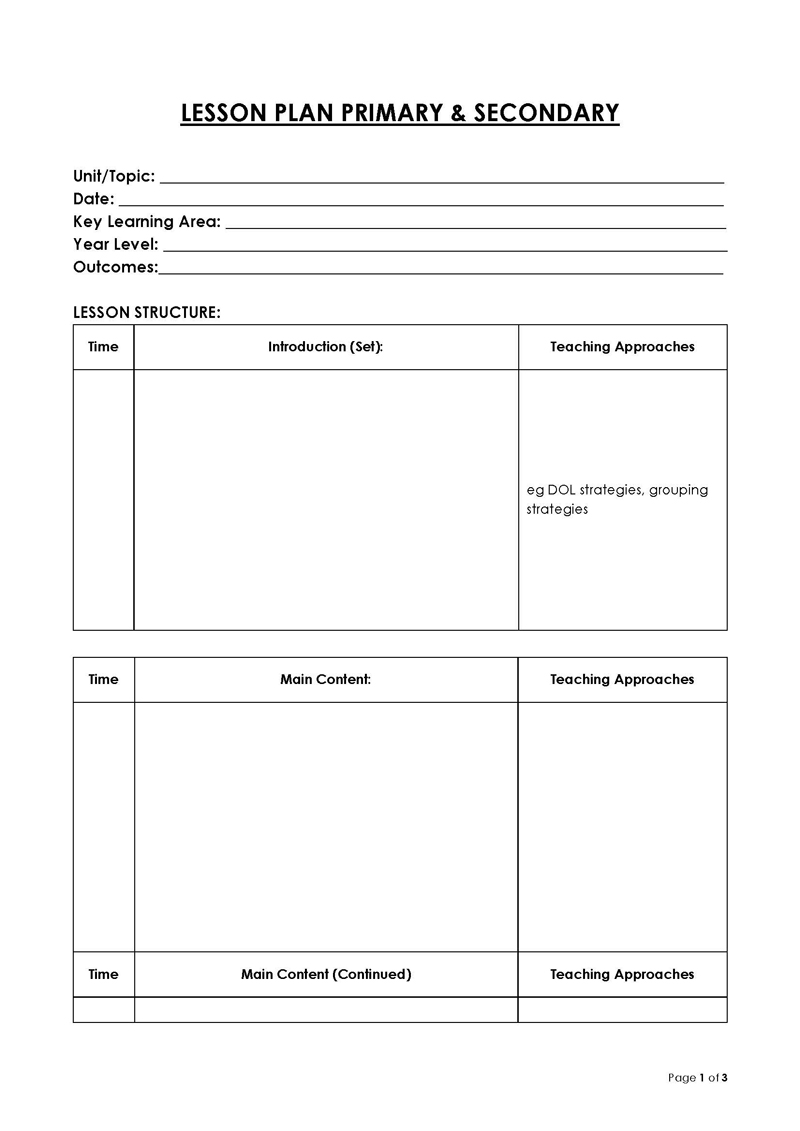
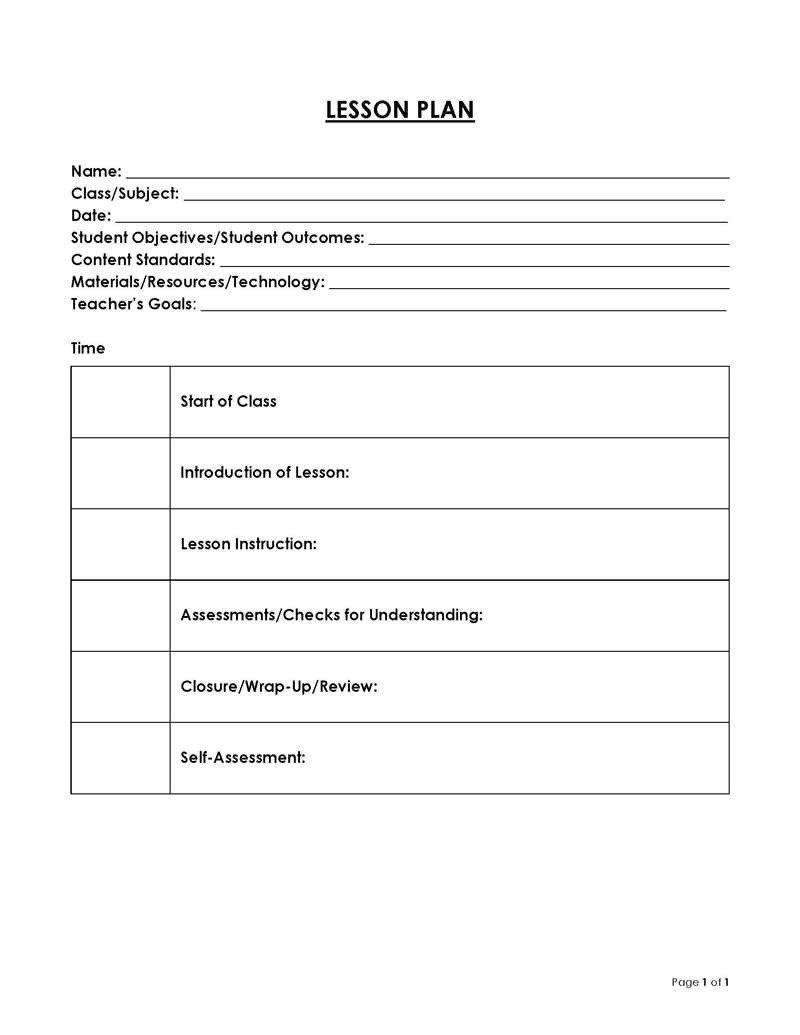
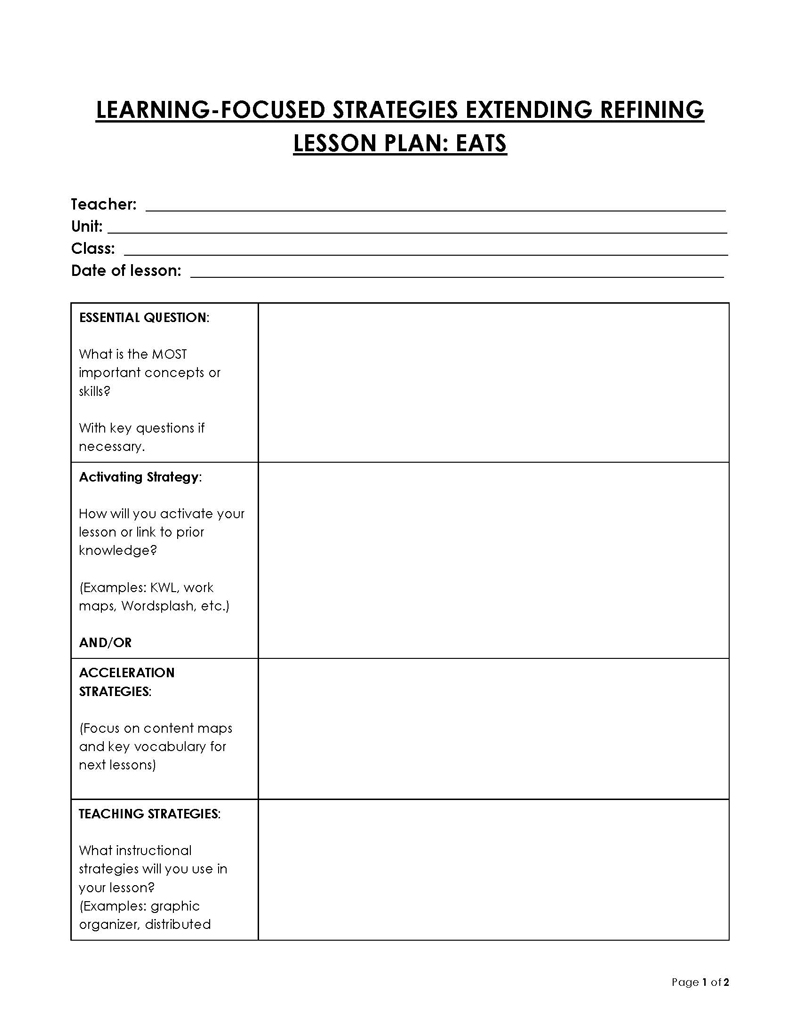
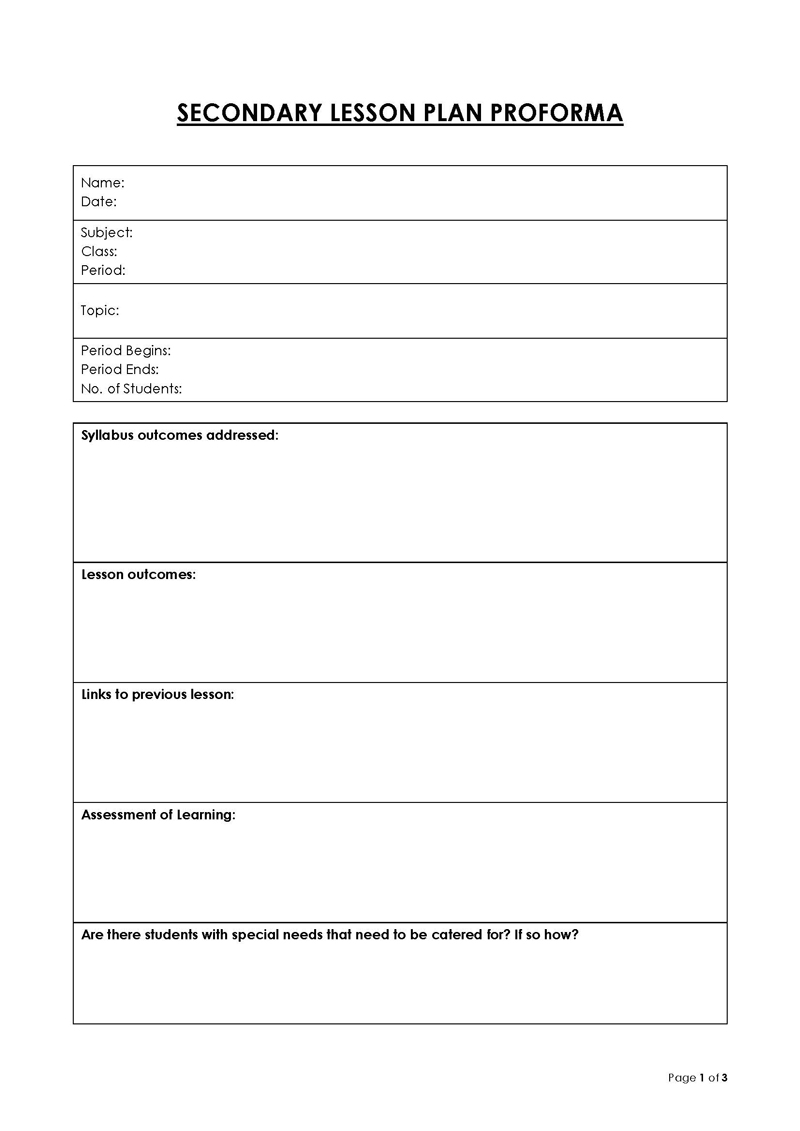
Basic Format of a Lesson Plan
While such lesson plans can be formatted in a number of ways, there are some general categories that make up a well-structured plan.
Use the list below to make sure your lesson plan contains all the necessary information:
Date
Even if it changes, writing the date you intend to give each lesson will help organize your plans.
Objectives and goals
Your objective and goals should relate to the general purpose of the lesson. Objectives describe what you want the children to achieve by the end of a lesson. It’s best to choose just a few objectives. A focused lesson is more effective than unrealistic expectations. These objectives may come from your knowledge of children’s skills at their age or state curriculum recommendations. Objectives can be written in terms of activities and behaviors.
EXAMPLE
After completing X activity, children should be able to perform X behavior.
You will likely have goals relating to both the outcome of the activities and the children’s experience. Chances are you want them to have fun and work on a certain skill. The goals and objectives for each lesson are likely short-term, but they should tie into broader long-term goals for the year.
Materials and location
Compile a detailed list of materials needed for the activity and note where the activity will take place. Many such activities require art supplies, books, writing utensils, and more. Be specific about the qualities of the needed items (i.e. size, color, etc.). This way you can ensure that you’re completely prepared with all of the needed supplies. A good way to evaluate your materials list is to ask yourself if someone else could use your list to pick up the exact items that you need.
Finally, a materials list serves as a record of what you used in your lesson. If something doesn’t work out, you can re-evaluate your list to see if the lesson would run better with different materials.
Planning the location beforehand gives you time to determine which location is most suited for your activity. Where will you have room for your supplies? What spots eliminate the most distractions? Your lesson may also be a good opportunity to switch things up and take the kids outside or to a new location. Also consider if the children need to move around, remain seated, or stand.
Procedures
The procedures section is typically a dialogue that describes the step-by-step process of a lesson. Start by giving a descriptive name to the lesson you’re planning.
From there, break the procedures into the following sections, providing as much detail as possible:
Introduction
The two major goals of an introduction are to get the children excited about the activity and to provide any necessary background. Introductions can involve pictures, statements, questions, or reading. Kids will likely be most curious if you are theatrical with your introduction.
Main activity
Your main activity should be the focal point of your lesson. This is where the children receive educational content in the form of facts, vocab, etc. The main activity should be listed as step-by-step instructions. An excellent way to decide if the steps are detailed enough is to consider if another teacher could recreate your activity based on what you wrote. Be sure to include how the materials listed earlier will be used.
Activity closure
The active closure is where you let the children know that the activity is finishing up and provide them with an opportunity to review what they have accomplished. Instead of abruptly moving on to a different lesson, acknowledge that the activity has ended and ask the children to recall what they did. The main elements of closure are how you will stop the activity and how you help the children review. Review questions should prompt the kids to state the importance of the activity.
Transition
Transitions are used to get children situated and in the right place for their next activity. The best transitions are learning opportunities themselves.
EXAMPLE
You can reinforce name writing practice by dismissing children to the next activity location based on letters of the alphabet.
When drafting your transition, consider what the next activity is, where it is located, and any physical changes the children must make (i.e., moving from a sit-down to stand-up activity).
Questions
It’s helpful to plan out a couple of questions to ask throughout and at the end of the lesson. These questions should be open-ended and focus on assessing if the children understand the content you are providing.
Questions like “why did we do X?” and “why did X happen?” can be useful in determining what the kids learned from the activity.
Use the goals you listed earlier to devise questions that assess if the children met the objectives.
Child assessment
You will likely need more than questions to assess if the kids met your goals, especially if you are targeting behaviors or physical skills rather than informational knowledge. In the child assessment section, list the strategies you will use to determine if the children have performed the behaviors you outlined in your objectives. For preschoolers, most assessment methods are observational.
Therefore, it would help if you document what you see for future reference. This may involve writing anecdotal records, keeping checklists to assess multiple skills, collecting samples of work such as crafts, or more direct assessments like having the children identify objects or pictures.
Self-evaluation
The final section of a lesson plan is self-evaluation. This portion is not completed until after the lesson takes place. A self-evaluation is a place for you to reflect on how the kids responded to the activity and how well the activity targeted the intended objectives. It’s great to include pictures or the children’s work to help you capture more of the details. Self-evaluations can help you decide whether or not you will replicate the lesson in the future.
This section serves as a record of what works or what doesn’t. Therefore, even if the outcome is negative, you shouldn’t throw the lesson plan away. This way, you can build on the weaknesses of the lesson in the future or at least remember what has not worked in the past.
Closing
Hopefully, this lesson plan breakdown helps make the planning process less overwhelming. While planning does take effort, it certainly pays back in the form of a more relaxed teaching experience.
Pre-Writing Considerations
It’s helpful to take time to organize your thoughts before creating your lesson plan.
Consider the following advice before starting to ensure that you’re making a high-quality plan:
Know your students’ skills
To teach your students what they really need to learn, you have to be aware of where they’re starting. Before narrowing down your goals, take some time to assess your students’ skills in a variety of areas, such as reading readiness, counting, and social development. Determine the gap between their skill level now and what levels they should meet by the end of the year to be on track for kindergarten. The best lessons will focus on bridging that gap.
Look at the big picture
The goals of each lesson should really be subcategories of broader goals. So, before planning lessons, make sure you have an idea of your big goals for the year. Then, you may choose a theme or smaller objective for each month that is further divided into individual lessons.
Keep the schedule flexible
It’s helpful to maintain a generally consistent schedule because small children feel calmer when anticipating what’s next. That being said, if your schedule is too rigid, it’s hard to give children a voice. On the other hand, flexible schedules help you incorporate student choice and implement changes when routines are not working.
Make room for student choices
When you allow student choices, you give the children the chance to experience independence and build critical thinking skills. Therefore, when drafting lesson plans, actively search for spots where you could reasonably and realistically include student choices.
Keep developmental stages in mind
At the heart of every such lesson plan should be the awareness that preschoolers are small children. Teaching strategies from elementary schools are likely not good fits. Instead, make sure your lessons are developmentally appropriate by considering the students’ need for play and their short attention spans.
Writing a Lesson Plan
While writing lesson plans can be time-consuming, it will become easier over time as you get used to the process.
The steps below outline how to create a lesson plan that addresses your short and long-term goals:
Plan the big picture
The first step is to look at the big picture by assessing the learning benchmarks you must target in that year and the children’s current skill levels. Knowing where the kids stand in categories like verbal skills and motor skills helps you know what to prioritize. Once you know where your children are and where you want them to be at the end of the year, you can list broad goals or objectives they should meet by summer.
It’s important to realize that the children will likely display a range of skills. Your class may consist of both gifted children and children with special needs, so your big picture plan must incorporate how you will accommodate children with different needs.
Students with disabilities like autism must be referred to the site coordinator so that they may start the process of receiving an Individualized Education Plan (IEP). The IEP will help you serve the child in guiding them towards goals specific to them.
Also keep in mind the audience of your lesson plan. Will it be viewed by parents or other staff members? If your lesson plans will be shared, it’s extra important to be detailed and professional. The last big picture consideration is the structure of your classroom. How many children are in your class, how long does the school day last, and what resources and learning areas do you have access to? This information will help you determine what kind of activities are realistic.
Create a calendar of the semester or school year
Before diving into detailed activity plans, make a calendar of your semester or school year. This can be done easily on a computer or on a physical calendar. The point of this calendar is to see when start, end, and holiday dates of your class so you know how many lessons you need to plan. Label the number of each class week on the calendar to help organize your plans.
You may also want to pick a theme for each month. This theme should contribute to your big picture objectives. From there, you can create subcategories to address each week.
Obtain or create your student’s daily schedule
The general schedule may have already been given to you, or you may have more freedom to structure the day. A daily schedule should map out when students leave and arrive and when daily activities like recess, lunch, or nap time occur. It’s important to have this with you when scheduling lessons so that you know what blocks of time you have to work with.
Divide the day into subject areas
Each day may be broken up into blocks of time spent on different subjects. Keeping a routine of the order of subject areas helps keep children relaxed. Common subjects are counting, letters, and language. The subjects you choose should target the social, physical, emotional, and mental development. Within the subject blocks, you can plan different activities for each day.
Break subject areas into smaller time blocks
It’s helpful to segment each subject into 10-20 minute blocks. Since they have very short attention spans, you will need to change activities quickly. If you don’t, they may not be focused enough to meet your goals for the lesson.
Fill in activities and lessons
Now that you have clear-cut time frames to plan each lesson, you can begin filling in activities. Remember to create activities with your monthly and weekly themes in mind. Each activity should be relevant to the subject area and take students closer to their yearly objectives.
Plan the lesson around student interest
The best way to make sure that your students pay attention and absorb information is to adapt your lessons to the interests of the class.
Read below for realistic ways to engage your students without compromising their academic progression:
Identify your objective
Each lesson should have a specific objective that contributes to your broader goals for the year. Objectives can be information you want your students to know or skills you want them to perform.
EXAMPLE
You may want your students to identify a shape or write their names.
Each activity within the lesson should target a specific skill. Even if the students are just playing, they are likely building social skills.
Consider the interests of your current students
The most effective lessons engage with the existing interests of students. You can get an idea of this by asking them what they want to learn or observing the type of activities and subjects that get them most excited. These children also tend to have an awareness of pop culture through experience with cartoons or video games.
Asking them about their favorite characters or noting who appears on their clothes or backpacks can help you grab their attention by incorporating familiar names in examples. Once you are aware of student interests, you can use them to pick monthly themes and activities.
Choose your approach
Your approach determines how the students will build the skills related to your objectives.
EXAMPLE
Students may learn through writing, painting, physical movement, etc.
Approaches may also vary based on the level of play and teacher involved. It’s important to vary your approaches to hold the attention of your students. Above all, make sure the approach is developmentally appropriate.
Gather your materials
Refer to the materials section of your lesson plan to ensure you have everything you need before starting. This may include books, toys, art supplies, and more. You should bring enough supplies for every student to participate and some extra in case of any mishaps.
Implement the lesson
With a quality plan in place, you are ready to carry out the lesson. It is alright if you improvise at times instead of going off exactly what you wrote. There are a lot of unpredictable factors. Just be aware that you’re staying within the timeframe set for the lesson. Once you are done, it is good practice to look back at your plan and make notes about what was and was not successful.
Create goals for learning
Always keep the goals of learning in mind when writing lesson plans. While generally, the purpose is to prepare kids for kindergarten, your students will present a unique skill set, and therefore will need to pursue certain goals that may differ from the class before them.
Your goals for your students will likely involve language, cognitive skills like identifying shapes and colors, learning to write their names, counting, participating in inappropriate interactions with their peers, and developing motor skills like the ability to use scissors.
Keep lessons fun
Play should always be at the center of school. For children so young, playing and having fun is actually the most developmentally appropriate way to engage in learning. This means less structure and repetitive activities, and more room for the children to use their imagination.
EXAMPLE
It’s common for classrooms to have playsets like a mock kitchen or a costume closet to give kids the opportunity to play pretend.
Freedom and fun in the classroom will positively affect mental and social development.
Tips for Creating a Good Lesson Plan
Consider the following tips for creating high-quality lesson plans:
Keep the activities simple
If an activity seems complex and long-winded to you, it will certainly feel the same way for a kid. Additionally, if it takes you pages to write out an activity, chances are it is not developmentally appropriate. When an activity is too simple for your students, you will likely notice this as you are facilitating your lesson. In this case, you can note ideas to take it a step further should you choose to try something similar in the future.
Curate the lessons thoughtfully
When taking lessons, be sure to consider how you can combine the children’s need for fun and for hitting kindergarten benchmarks. This will ensure the kids can have the best experience while also learning through developmentally appropriate activities.
Find an approach that works
There are many ways to approach lesson planning. It is more important to find the most efficient approach for you than to use the most popular one. Lessons themselves may also have different approaches. Activities involve varying degrees of child input and play. Be sure to vary activity approaches throughout today.
EXAMPLE
Seated lessons and active exercises should be mixed together.
Lesson planning may look different for you, depending on the objectives you are working with.
Start slowly
You don’t need to plan everything at once, especially when you’re new to the process. Instead, start with establishing general routines and making a list of simple activities.
Create first using pen and paper
Using pen and paper helps you visualize your plan and make changes easily. This method is especially useful for quickly jotting down ideas when you aren’t around a computer. You can always create digital backups by scanning the plans onto computers. While it’s also easy to begin planning on a computer, it is also easier to get distracted and lose your train of thought.
Final Thoughts
Creating lesson plans for preschoolers proves to be an overwhelming task when you don’t know where to start. However, as long as you review the format of lesson plans, identify clear objectives for the children, use templates, and keep the activities fun and developmentally appropriate, you will find it does not take long to become an expert lesson planner.




